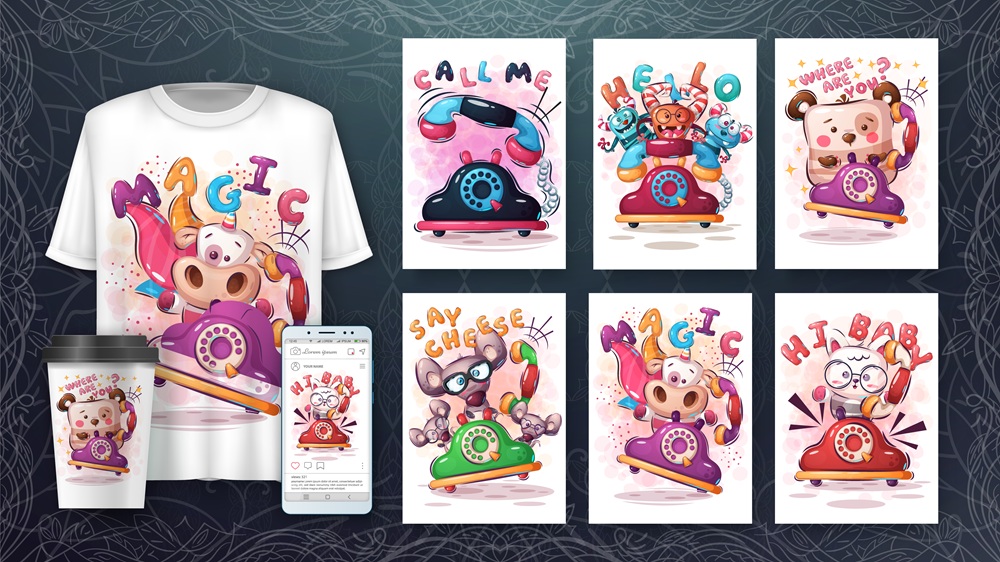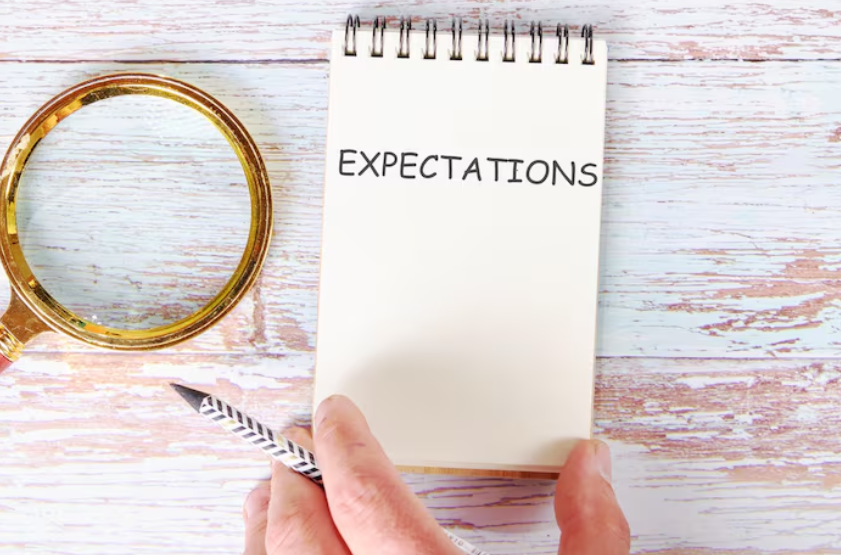Starting an online business has never been easier—or more confusing. You've probably heard about dropshipping success stories and print-on-demand entrepreneurs making bank from their laptops. But which path should you actually take?
I'll be honest: I've tried both. And after helping dozens of business owners navigate these waters (plus making some expensive mistakes myself), I've learned that the "best" business model depends entirely on your goals, skills, and tolerance for complexity.
This comprehensive guide breaks down the key differences between dropshipping vs print on demand, so you can choose the right ecommerce business model for your situation. No fluff—just practical insights from someone who's been in the trenches.
What Exactly Is Print on Demand?

Picture this: You design a clever t-shirt slogan, upload it to a platform, and someone in Ohio orders it at 2 AM. Within days, that shirt is printed, packed, and shipped—without you touching a single product.
That's print on demand in action, showcasing the efficiency of modern ecommerce practices.
How Print on Demand Works
The print on demand business model is beautifully simple:
- You create custom designs for products (t-shirts, mugs, phone cases, etc.)
- Upload designs to a print-on-demand supplier like Printful or Gooten
- Customer places an order in your online store
- The supplier handles printing, packaging, and shipping directly to the customer
- You keep the profit margin after paying the supplier's base cost
What makes print on demand special? Every product is made only after someone buys it. No inventory, no storage fees, no leftover stock gathering dust in your garage.
Popular Print on Demand Products
The most successful print on demand stores I've seen focus on:
- Custom apparel (t-shirts, hoodies, tank tops)
- Home decor (canvas prints, throw pillows, wall art)
- Accessories (phone cases, tote bags, stickers)
- Drinkware (mugs, water bottles, wine glasses)
- Books and journals
The key? Your designs need to resonate with specific audiences. Generic "Live, Laugh, Love" isn't going to cut it anymore.
What Is Dropshipping?

Dropshipping lets you sell products without holding inventory—but unlike print on demand, you're typically selling existing products from a dropshipping supplier.
How Dropshipping Works
Here's the dropshipping business model in action:
- Find products from dropshipping suppliers (often through platforms like AliExpress)
- List these products in your dropshipping store at marked-up prices
- When a customer places an order, you purchase the item from your supplier
- The supplier handles fulfillment and ships directly to the customer
- You profit from the price difference
The appeal is obvious: you can sell virtually anything without buying inventory upfront. Electronics, fitness gear, home goods, beauty products—if someone makes it, you can probably dropship it.
Types of Dropshipping Models
Traditional Dropshipping: Work with overseas suppliers (typically from China) for lower costs but longer shipping times.
Domestic Dropshipping: Partner with suppliers in your home country for faster shipping but higher product costs.
Private Label Dropshipping: Sell generic products under your own brand name for better margins and brand control.
While traditional dropshipping focuses on selling overseas products to domestic customers, reverse dropshipping flips this model by sourcing products domestically and selling to international markets. This alternative approach can reduce competition and tap into markets where Western brands command premium pricing and strong demand.
For entrepreneurs interested in exploring unconventional dropshipping strategies that leverage geographic arbitrage opportunities, our guide to reverse dropshipping explains how to identify profitable international markets and navigate cross-border logistics challenges.
Print on Demand vs Dropshipping: The Key Differences
After running both types of businesses, here are the crucial differences that actually matter:
Product Customization
Print on Demand: You create unique products with custom designs. Every item is one-of-a-kind and reflects your brand.
Dropshipping: You're selling existing products that thousands of other stores might also sell. Differentiation comes through marketing, not product uniqueness.
This difference is huge. With print on demand, you're building a brand around your creativity. With dropshipping, you're essentially a middleman for manufactured goods, relying on a dropshipping supplier for inventory.
Profit Margins
Print on Demand: Lower profit margins per item (typically $3-8 per t-shirt) but higher perceived value due to custom designs.
DropshippingHigher potential profit margins (sometimes 50-300% markup) but more price competition in the dropshipping business model.
I've seen print on demand stores charge $25 for a shirt that costs $8 to produce. Meanwhile, dropshipping stores might sell a $5 phone accessory for $19.99. Both can work—it depends on your volume and positioning.
When evaluating dropshipping profit potential, understanding the fundamental distinction between high-ticket and low-ticket approaches dramatically impacts your business strategy and daily operations. High-ticket dropshipping focuses on premium products with larger profit margins per sale but requires more sophisticated marketing, while low-ticket dropshipping relies on volume and impulse purchases with smaller per-unit profits. For comprehensive guidance on choosing between these contrasting dropshipping strategies based on your marketing budget, risk tolerance, and scaling goals, review our complete breakdown of high-ticket dropshipping versus low-ticket dropshipping to determine which approach maximizes your strengths.
Competition Level
Print on Demand: Less direct competition since you're creating unique product designs. Your main competition is other creative entrepreneurs in your niche.
Dropshipping: Intense competition since anyone can sell the same products. Success depends heavily on marketing and customer acquisition skills.
Fulfillment Speed
Print on Demand: 3-7 business days for production plus shipping time. Customers understand they're getting custom products.
Dropshipping: Can range from 2-3 days (domestic suppliers) to 2-6 weeks (overseas suppliers). Shipping time often determines customer satisfaction.
Startup Investment
Both business models allow you to sell products without holding inventory, but the initial costs differ:
Print on Demand: Lower upfront costs. Main expenses are design tools, store setup, and marketing.
Dropshipping: Varies widely. You might start with $500 or need $5,000+ for inventory samples, store development, and advertising for your online store.
Print on Demand Pros and Cons
Let me share what I've learned from working with dozens of print on demand entrepreneurs:
Advantages of Print on Demand
Creative Control: You're not just reselling products—you're creating them. This feels incredibly rewarding when customers love your designs.
Brand Building: Since you're creating unique products, building a recognizable brand is much easier than with generic dropshipping products.
Lower Risk: No inventory means no risk of products going out of style or sitting unsold.
Passive Income Potential: Once designs are uploaded and marketing is dialed in, sales can continue with minimal day-to-day involvement.
Scalability: Adding new designs is simple, and print on demand services handle production scaling automatically.
Print on Demand Disadvantages
Lower Profit MarginsYou'll make less per sale compared to successful dropshipping products, especially if you ignore print on demand strategies.
Design Dependency: Your success hinges entirely on creating designs people want to buy. Not everyone has this creative skill.
Limited Product Range: You're mostly restricted to items that can be printed on (though this range is expanding).
Quality Control: You're trusting print on demand companies to represent your brand through their production quality.
I learned this lesson the hard way when a print-on-demand supplier started using cheaper ink. Customer complaints about fading designs nearly killed my brand before I caught the issue.
Dropshipping Pros and Cons
Here's the reality of dropshipping based on working with store owners at every level:
Advantages of Dropshipping
Wide Range of Products: You can sell almost anything—electronics, beauty products, home goods, fitness equipment.
Higher Profit Potential: Successful dropshipping stores can achieve impressive profit margins on the right products.
Market Testing is vital in both dropshipping and print on demand to understand customer preferences.: Easy to test new products without inventory investment. If something doesn't sell, you just remove it.
Established Demand: You're selling products with proven market demand rather than hoping your designs resonate.
Business Skills Development: Dropshipping teaches valuable skills like product research, customer acquisition, and conversion optimization.
Dropshipping Disadvantages
Intense Competition: Everyone has access to the same suppliers and products. Winning requires superior marketing.
Customer Service Headaches: You're responsible for customer support but don't control fulfillment. This creates frustrating situations.
Supplier Dependency: Your business is only as good as your weakest supplier. Quality issues, stock-outs, and shipping delays can destroy customer relationships.
Lower Customer Loyalty can be a significant drawback in the dropshipping and print on demand sectors.: Customers often don't care about your brand—they just want the product at the best price.
Platform Risk: Heavy dependence on advertising platforms (Facebook, Google) that can change rules overnight.
Dropshipping vs Print on Demand: Which Business Model Is Right for You?

After helping business owners choose between these models, here's how to make the right decision:
Choose Print on Demand If:
- You have creative skills or enjoy designing
- You want to build a recognizable brand
- You prefer lower competition and unique products
- You're okay with smaller profit margins per sale
- You value the satisfaction of creating something original
- You have patience for slower, steadier growth
Choose Dropshipping If:
- You excel at marketing and customer acquisition
- You're comfortable with high competition
- You want higher profit potential per sale
- You prefer testing and iterating quickly
- You don't have design skills but are strong analytically
- You're willing to handle more complex customer service
Hybrid Approach: Print on Demand and Dropshipping
Here's something most people don't consider: you don't have to choose just one.
Some of my most successful clients run stores that combine both models:
- Custom print-on-demand products for brand building and higher margins
- Dropshipped accessories and complementary products for wider selection
For example, a fitness brand might sell custom workout shirts (print on demand) alongside resistance bands and shakers (dropshipping). This maximizes both creativity and profit potential.
Beyond the print on demand and traditional dropshipping models covered here, Amazon FBA represents another fulfillment approach worth considering for entrepreneurs evaluating their options. While dropshipping eliminates inventory risk entirely, Amazon FBA involves purchasing inventory upfront but leverages Amazon's massive customer base and logistics infrastructure. For entrepreneurs weighing the trade-offs between inventory investment and fulfillment control, explore our detailed comparison of Amazon FBA vs dropshipping to understand which fulfillment model aligns with your capital availability and growth strategy.
Starting Your Online Business: Practical Next Steps
Ready to dive in? Here's how to get started with either business model:
Getting Started with Print on Demand
- Choose Your Niche: Focus on specific audiences (dog lovers, nurses, gamers) rather than trying to appeal to everyone.
- Design Creation: Use tools like Canva, Photoshop, or hire freelancers on Fiverr for custom designs.
- Select Print on Demand Services: Popular options include Printful (premium quality), Printify (more options), and Gooten (competitive pricing).
- Set Up Your Shopify StoreMost print on demand suppliers integrate seamlessly with Shopify, enhancing your online store's functionality.
- Price Your Products: Research competitor pricing and aim for 2.5-4x your production cost.
Getting Started with Dropshipping
- Product Research: Use tools like SaleHoo, Spocket, or manually research trending products on social media.
- Find Reliable Suppliers: Vet potential dropshipping suppliers carefully. Order samples to test quality and shipping times.
- Build Your Store: Focus on professional design and compelling product descriptions. Customer trust is everything.
- Set Up Customer Service: Prepare for questions about shipping, returns, and product details.
- Launch Marketing Campaigns: Budget at least $500-1000 for initial advertising tests.
Artificial intelligence tools are revolutionizing dropshipping operations in 2025, automating everything from product research and competitor analysis to customer service and ad copy creation. Smart entrepreneurs leverage AI to identify trending products faster, optimize pricing dynamically, and personalize customer interactions at scale—competitive advantages that manual processes simply can't match.
For comprehensive coverage of the most effective AI-powered tools transforming dropshipping businesses this year, explore our curated guide to the best AI tools for dropshipping in 2025 to gain operational efficiency that separates successful stores from struggling competitors.
Common Mistakes That Kill Online Stores
I've seen these mistakes destroy otherwise promising ecommerce businesses: neglecting the importance of supplier relationships.
Print on Demand Mistakes
Generic DesignsCreating designs that could appeal to anyone usually appeals to no one, especially in a competitive ecommerce landscape. Get specific with your target audience.
Ignoring Copyright: Using copyrighted images, quotes, or logos will get your store shut down fast.
Poor Product Mockups: Customers buy based on how products look in your store. Invest in quality mockups.
Dropshipping Mistakes
Choosing Bad Suppliers: A single supplier with poor quality or slow shipping can ruin your reputation.
Ignoring Market Saturation: Some products are so over-dropshipped that profit margins have evaporated.
Weak Product Descriptions: Generic supplier descriptions won't convince anyone to buy from you over competitors.
The Real Numbers: What to Expect

Let's talk realistic expectations for each business model:
Print on Demand Revenue Potential
Beginner (Months 1-6): $100-500/month with 1-3 successful designs Intermediate (6-18 months): $500-2,500/month with expanded product lines Advanced (18+ months): $2,500-10,000+/month with strong brand and multiple revenue streams
Dropshipping Revenue Potential
Beginner (Months 1-6): $500-2,000/month with one successful product Intermediate (6-18 months): $2,000-10,000/month with multiple products and refined marketing Advanced (18+ months): $10,000-50,000+/month with established supply chains and customer bases
These numbers assume you're treating this as a real business, not a side hobby, which is crucial for effective fulfillment. Success in either model requires consistent effort and smart decision-making, particularly in managing your fulfillment processes.
Which Ecommerce Business Model Wins?
Here's the truth: neither print on demand nor dropshipping is inherently "better." They're different tools for different goals in your dropshipping and print on demand business model.
Print on demand offers creative fulfillment, brand building opportunities, and lower competition—but with smaller profit margins and higher creative demands.
Dropshipping provides higher profit potential, faster scaling, and wider product selection—but with intense competition and complex customer service challenges.
The business owners I've seen succeed long-term in either model share common traits:
- They treat it as a real business, not a get-rich-quick scheme, which is essential for success in ecommerce.
- They focus relentlessly on customer satisfaction
- They continuously test and optimize their approach
- They're willing to invest time and money in learning proper marketing
Ready to Launch Your Online Store?
The best business model is the one you'll actually execute consistently. Whether you choose print on demand vs dropshipping, success comes from taking action and iterating based on results.
My recommendation? Start with whichever model excites you more. You can always expand or pivot later as you learn what works for your situation.
If you're drawn to creativity and brand building, test print on demand with a few designs in a specific niche. If you're more interested in marketing and profit optimization, start dropshipping with thoroughly researched products.
Either way, remember: your first store probably won't be your last or most successful one. The goal is to start learning the fundamentals of ecommerce business, customer acquisition, and online marketing.
The entrepreneurs making serious money in 2025 will be those who started learning these skills today—regardless of which business model they chose initially.
Want personalized guidance on launching your online business? Book a free strategy call to discuss your goals and get tailored recommendations for your situation.


